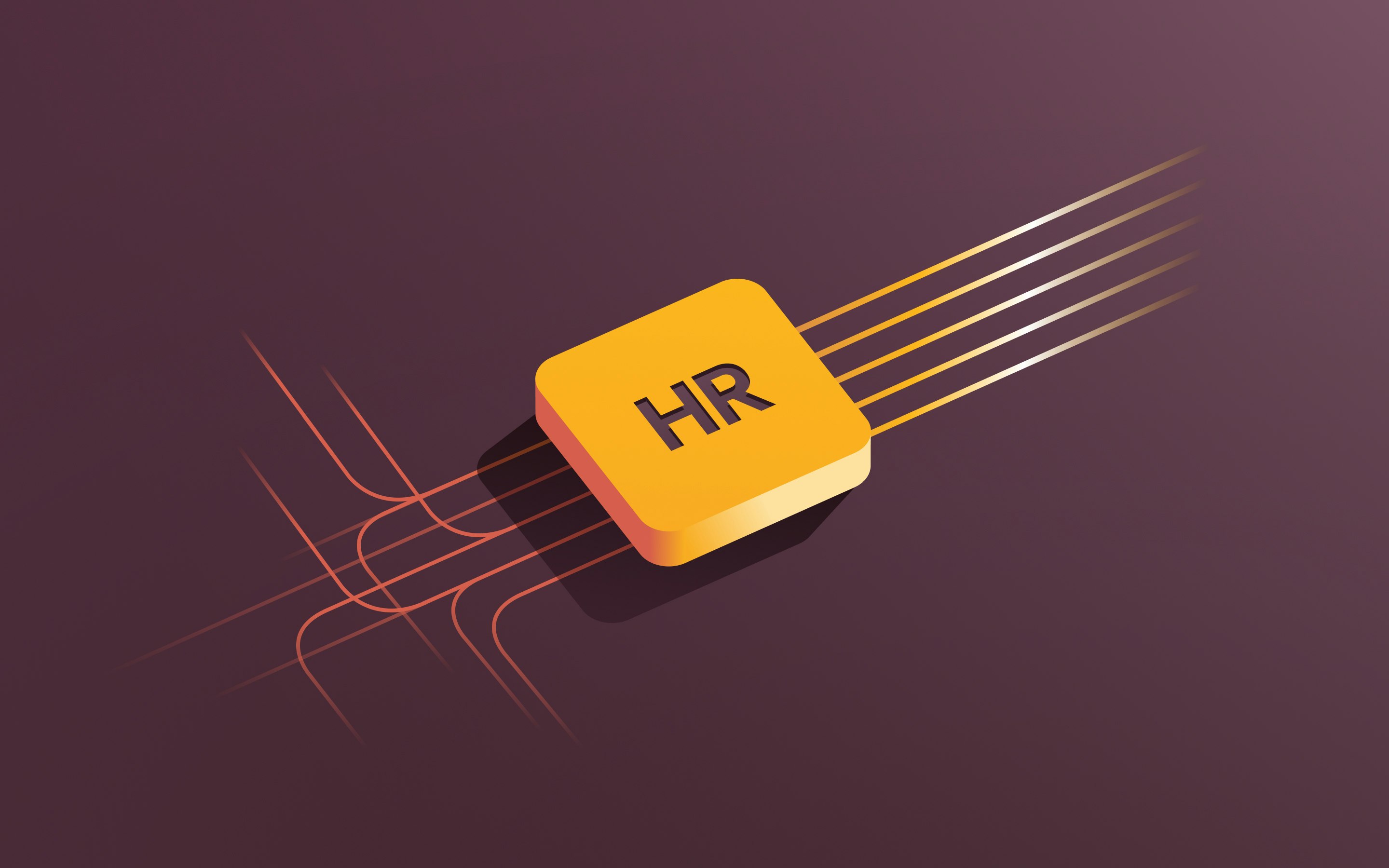The best 7 BambooHR alternatives and competitors
There are essentially limitless reasons businesses seek out HR software. When you need to manage your employee data, recruiting, onboarding, benefits administration, performance management, and other HR functions—and you want to do it all in one place—an all-in-one platform seems like a no-brainer. And that’s what draws companies to solutions like BambooHR: “One easy-to-use platform for everything HR,” according to its website.
But there are a ton of other HR platforms out there. Is BambooHR really the right one for your business? How do you know which one is the right one?
While BambooHR is well known for being user-friendly and covering most essential core HR functionalities, some businesses say they find that it doesn’t actually meet all their needs—especially if they’re scaling beyond being small or mid-sized. Whether it's advanced payroll features, deeper integrations, or specialized tools, there are several reasons to look for alternatives.
In this article, we’ll look at BambooHR in-depth—and then cover seven top alternatives, each offering unique features and capabilities that might be a better fit for your organization. Whether you're seeking missing features like learning management systems or compensation management, more comprehensive compliance support, or more robust automation to help your HR team save time and resources, these BambooHR alternatives might be just what you need.
What is BambooHR?
BambooHR is a human resources management platform (HRIS) that offers an all-in-one HR system with a “web” of tools like recruitment, onboarding, payroll software, benefits administration, time tracking, and talent management—all centralized and without siloes. BambooHR is designed for small businesses and mid-sized companies, with an intuitive, easy-to-use interface and a mobile app where users can access all of its features in one place, which offers added convenience.
BambooHR offers two main plans: A Core HR plan with its main suite of tools, and a Pro plan, which has the full tool suite, plus performance management, employee engagement, and employee community tools added on.
BambooHR software limitations
BambooHR often meets the needs of smaller companies (usually those with less than about 150 employees). Businesses that are larger or have plans to scale may find that its platform lacks the depth, breadth, and configurability to support their growth—and may hold them back.
In addition to being built for smaller businesses, BambooHR has three main limitations:
Missing key functions
BambooHR isn’t as comprehensive as some of the other all-in-one HRIS and HR management platforms on the market. For example, it doesn’t offer a learning management system or a compensation management module. Plus, it isn’t as well-suited for global companies as some other solutions (for example, BambooHR doesn’t automatically localize based on employee attributes—i.e., the currency in an employee’s documents won’t automatically update based on their location).
Lacking compliance solutions
BambooHR has more limited compliance features than some other platforms. For example, it doesn’t issue proactive, employee-level notifications for compliance or automated resolutions (even if it can provide calculations if an employee exceeds overtime limits). This means your team will have to be aware of and on top of their own compliance, which adds more work to their plate.
Limited automation
BambooHR’s automation capabilities are narrow compared to other platforms. You can’t automate across all its HR modules and it only offers a small handful of custom workflow templates (other solutions, like Rippling, offer hundreds). You also can’t create custom fields when building your own workflows, which limits how much you can automate and prevents you from creating time- and money-saving processes with BambooHR.
7 BambooHR alternatives
If BambooHR isn’t the right HRIS for your organization, there are many other HR management solutions that might better suit your specific needs. Here, we highlight seven top BambooHR competitors, each offering unique features, pros, and cons that make them strong alternatives.
1. Rippling
Rippling offers a full-suite human capital management solution, built from the ground up so every tool is designed to work perfectly together—meaning you can manage and automate the entire employee lifecycle, from onboarding to offboarding. Rippling’s HCM platform includes HR tools like US and global payroll, Benefits Administration, Recruiting, Performance Management, Time & Attendance, Learning Management, Headcount Planning, Compensation Bands, and more—plus automated compliance to guide your teams when it comes to federal, state, and local regulations.
- Automate onboarding: As soon as you click “Onboard”, Rippling starts the onboarding workflow by sending an offer letter, kicking off benefits enrollment, assigning training, and more—tailoring it all to the individual employee depending on their role, location, and other attributes.
- Automate moves, promotions, and other transitions: Rippling automates downstream changes, like assigning new compliance training automatically to an employee who moves states when they update their address—saving your HR team hours of manual work.
- Automate offboarding: When an employee leaves, it starts a chain reaction to keep their departure secure, compliant, and minimally disruptive to your operations by generating their separation agreement, calculating and cutting their final check, removing them from benefits, compliantly administering COBRA, disabling their app access, and more.
Since Rippling unites all your data across all its apps, you can build reports, automations, policies, and permissions that shape the platform to work the way you want it to. That includes building powerful custom reports based on virtually any employee data—no code required.
Rippling is the one platform that can manage any workforce of any size—effortlessly.
Rippling’s G2 score
Rippling’s Capterra score
4.8 out of 5
4.9 out of 5

Rippling isn't just a HRIS. It's a system that can support literally every business function you have!
Key features:
- Payroll, HR, IT, and finance—all in one unified platform
- Unified employee data across all applications so you can automate almost any process
- US and global payroll
- Time and attendance
- Recruiting and applicant tracking
- Onboarding
- Headcount planning
- Performance management
- Learning management
- Benefits administration
- Compensation planning
- Employee self-service portal
- Automated compliance management
- Hundreds of customizable, pre-built workflow templates
Rippling pros
Rippling cons
Full suite of HR tools, plus IT and Finance integrated into the same system.
Smaller companies might find the extensive functionalities overwhelming, and may not need all the features provided, leading to underutilization.
Everything is built on top of unified employee data, allowing you to automate processes across any Rippling or third-party app.
There can be a learning curve to take advantage of all of Rippling’s capabilities simply because it does so much.
Intuitive and easy-to-use interface.
US and global payroll so you can pay your entire workforce—employees and contractors, around the world—in the same pay run.
Advanced reporting and analytics based on any data across your entire organization, with no coding required to build custom reports.
Compliance is simplified, saving your team time and giving them peace of mind.
2. Deel
Deel offers an HRIS that’s built for global companies—it supports employees and contractors in many countries with global payroll, localized compliance support, and other features that may appeal to businesses that hire around the globe. Deel offers its HRIS for free to small and growing companies—if you have under 200 employees, you don’t have to pay to use the platform. Once you grow beyond 200 employees, though, Deel can quickly get expensive, as it costs $20 per employee per month.
While Deel offers an impressive suite of HR tools, it is missing some features that certain organizations might prioritize. For example, it doesn’t offer a mobile app. Its integrations are also limited compared to some other platforms.
Rippling’s G2 score
Rippling’s Capterra score
4.8 out of 5
4.9 out of 5
Key features:
- Payroll management
- Time and attendance
- Onboarding
- Learning management
- Benefits administration
- Compensation management
- Employee self-service portal
Deel pros
Deel cons
Fairly comprehensive suite of HR tools.
Expensive once you scale out of the free plan.
Made for global businesses, with features available in 150 countries.
No mobile app available.
Free for businesses with fewer than 200 employees.
Limited integrations with other apps and tools.
3. TriNet (formerly Zenefits)
TriNet offers a few different options for businesses looking for human resources management and support.
There’s TriNet PEO, a professional employer organization that co-employs other businesses’ workforces and takes on the administrative burden of running their HR functions, from payroll management to benefits administration, compliance management, and more. This helps businesses streamline their HR function so they can focus their time and resources on their core business activities.
TriNet’s other offering is TriNet HR, an all-in-one platform that businesses can use to keep their HR processes in-house, but streamline them using software, instead. TriNet HR is made for small to mid-sized businesses and has three straightforward membership tiers at affordable prices—starting at $8 per employee per month.
A closer look at TriNet HR’s offerings, however, reveal that it’s more limited than many other all-in-one HR solutions. For example, it only includes payroll, a vital part of an HR platform, in its most expensive membership tier. It doesn’t offer device, app, or expense management. It has few options for customization or automation and its reporting and analytics capabilities are narrow.
TriNet’s G2 score
TriNet’s Capterra score
4 out of 5
3.8 out of 5
Key features:
- Payroll management
- Time and attendance
- Applicant tracking
- Onboarding
- Learning management
- Benefits administration
- Compensation management
- Employee self-service portal
TriNet pros
TriNet cons
Multiple HR management options and plans with straightforward, transparent pricing.
Limited functionality compared to similar HR software.
Employee self-service portal and tools.
Payroll isn’t included in all plans.
Missing key HR features like device, app, and expense management.
4. Gusto
Gusto offers a straightforward, intuitive, cloud-based HR platform with payroll software and other tools geared toward small businesses and startups. Small to mid-sized companies are likely to find its interface easy to use with virtually no learning curve. And while Gusto is mostly payroll focused, it also has a robust benefits offering, offering access to healthcare, retirement plans, flex benefits, and other perks that make customizable benefits packages more accessible to businesses of all sizes.
Unfortunately, while Gusto does excel in offering payroll and benefits for small businesses, it’s pretty limited everywhere else.
Setting up your business on Gusto can be a time-consuming, manual process that requires inputting every employee’s information one-at-a-time. This can quickly become tedious and error-prone. Additionally, Gusto’s automation, analytics, and reporting capabilities are narrow compared to other HR management systems. And larger or scaling businesses may find that Gusto’s features aren’t deep or comprehensive enough to support their needs.
TriNet’s G2 score
TriNet’s Capterra score
4 out of 5
3.8 out of 5
Key features:
- Payroll management
- Time and attendance
- Applicant tracking
- Onboarding
- Learning management
- Benefits administration
- Compensation management
- Employee self-service portal
Gusto pros
Gusto cons
Transparent pricing plans.
Setting up your account can be time-consuming and require a lot of manual data entry.
Simple, intuitive platform.
Limited automation and reporting capabilities compared to other platforms.
Mobile app with employee self-service features.
Built for small businesses and may limit larger or scaling organizations.
Offers comprehensive employee benefits plans and administration features.
5. Namely
Namely is an all-in-one HR solution that offers a number of tiers with different features based on different pricing models. All the tiers include payroll, and all but the most affordable tier include onboarding, recruiting, performance management, compliance support, time tracking, and benefits administration.
Namely is a flexible and fairly comprehensive solution that’s geared toward small businesses. But many reviewers note that Namely’s customer support can be a challenge, and while it ultimately is helpful, it often takes a long time to respond to queries, even when they’re urgent.
Namely’s G2 score
Namely’s Capterra score
3.9 out of 5
4.2 out of 5
Key features:
- Payroll management
- Time and attendance
- Applicant tracking
- Onboarding
- Benefits administration
- Compensation management
- Employee self-service portal
Namely pros
Namely cons
Four membership tiers with different feature offerings to meet different business needs.
Most affordable tier doesn’t include much more than payroll.
Includes a convenient employee self-service portal.
Many reviewers say customer support can be slow to respond, even to urgent queries.
6. ADP Run
ADP is one of the largest, longest-running HR and payroll platforms in the world. ADP Run is its basic, payroll-focused product made for small businesses—typically, those with fewer than 50 employees.
ADP run allows users to run manual or automatic payroll, and while the base product only includes payroll, it’s extremely customizable—you can add on just about any of ADP’s other HR tools, like benefits administration, time and attendance tracking, expense management, and more. That makes ADP run a flexible solution for small businesses, since they can pick and choose exactly which features they need.
However, in online reviews, many customers write that ADP Run’s support can be difficult to get ahold of—and once they’re able to get in touch, they often encounter long hold times, even when trying to correct time-sensitive issues.
ADP also uses quote-based pricing. That makes it hard to estimate what this solution might cost, especially when getting an HR platform requires piecing together multiple add-ons at extra cost. ADP Run generally charges per employee per pay run (rather than a simple base fee structure), plus added fees for implementation, end-of-year tax filing, add-on features, and more.
ADP Run’s G2 score
ADP Run’s Capterra score
4.5 out of 5
4.5 out of 5
Key features:
- Payroll management
- Time and attendance
- Applicant tracking
- Onboarding
- Learning management
- Benefits administration
- Compensation management
- Employee self-service portal
ADP Run pros
ADP Run cons
Manual or automated payroll.
Pricing isn’t transparent.
You can customize your platform by adding on other HR management tools as needed.
Adding HR tools on top of payroll costs extra.
Well-reviewed mobile app and employee self-service tools.
Payroll isn’t synced to other HR data unless you add on extra features (and pay additional fees).
Customer support can be difficult to reach and have long wait times, according to reviews.
7. UKG
UKG was created when two other HR management solutions, Ultimate Software and Kronos, merged in 2020. Between the two of them, they combined around two dozen total acquisitions dating back to the 1970s that comprise their new, all-in-one, cloud-based HR management software, UKG Pro, which includes payroll software, people management, performance and goals tracking, benefits management, and more.
UKG Pro is one of the top HR management solutions for enterprise companies, but it can be used by businesses of all sizes. One aspect of this HR solution that often gets praised in reviews is how easy it is to use—many customers say it has a gentle learning curve and you can customize views within the platform to make the interface even more intuitive for your own team.
UKG’s user experience can be inconsistent, however. As a platform made up of many different acquired software solutions, its modules can be disjointed. And despite offering a comprehensive suite of HR tools, UKG charges extra for certain essential features, like the ability to create custom reports in the HR analytics module. The result is that the platform can end up costing in excess of three times as much as what users pay upfront due to extra fees.
ADP Run’s G2 score
ADP Run’s Capterra score
4.5 out of 5
4.5 out of 5
Key features:
- Payroll management
- Time and attendance
- Applicant tracking
- Onboarding
- Learning management
- Benefits administration
- Compensation management
- Employee self-service portal
UKG pros
UKG cons
Legacy platform with experience and name recognition.
Essential features (like custom report building) cost extra.
Comprehensive suite of HR tools.
Some features, like configuration and reporting—are extremely complex.
Easy to use with a smooth learning curve.
Modules can be disjointed.
Automation is limited.
Key features to look for in an HR software alternative
When looking for the right alternative for BambooHR, you need to identify key features that will best support your business needs. Here are some to consider:
Attendance and time management features
Look for solutions that have built-in time tracking and automated attendance monitoring—and that these features integrate with their payroll software. This will help your team reduce time spent on data entry while keeping more accurate records.
Integration capabilities
The human resource management system or HR solution should integrate seamlessly with other tools in your organization’s tech stack. Whether it's your payroll provider, project management software, or communication platforms, smooth integration makes sure data can flow and removes the need for manual data entry. This not only saves time and makes your HR professionals more efficient, but also reduces the risk of errors and inconsistencies. Look for an HR solution that offers a wide range of integrations and has an open API for custom connections.
Payroll tools
Comprehensive payroll tools are one of the most important parts of any HR solution. Look for a human resources management system that includes automated payroll processing, tax filing, direct deposits, and compliance support for federal, state, and local regulations. These features will all help your HR professionals make sure employees are paid accurately and on time.
Employee self-service features
Empowering employees to access and manage their own HR information can significantly reduce the administrative burden on your human resources team. Look for an HR solution that offers a user-friendly self-service portal where employees can update their own personal data, access and view their pay stubs, request time off, and access important documents. This not only improves the employee experience, but will give back time to your HR team to focus on more important, strategic work.
Why Rippling is your best HR software alternative
Rippling makes it easy to manage your workforce around the world and automate every step of the employee lifecycle.
Every part of Rippling is built to work together—but Rippling also lets you automate workflows across third-party apps through more than 600 integrations, so you can shape your HCM to the way your business runs.
See why Rippling was named the #1 Human Capital Management software by SoftwareReviews.
Frequently asked questions
What are the benefits of implementing HR software?
Implementing a human resources management solution can come with many benefits, including:
- Streamlined HR processes thanks to automation
- Better accuracy
- A better employee experience
- Scalability for your organization
What makes Rippling an excellent competitor to BambooHR?
Rippling combines HR, IT, and finance in one integrated platform so you can automate just about any process across the entire employee lifecycle. All of Rippling’s apps and tools were built to work together—unified by employee data—making it easier to manage a workforce of any size, anywhere.
What are the key differences between Rippling and BambooHR?
Still stuck between Rippling vs. BambooHR? Rippling unifies HR with IT and finance, while BambooHR focuses only on HR tools. Rippling also offers more advanced automation and reporting capabilities, more integrations, and better compliance features. Plus, Rippling is better suited to meet the needs of scaling businesses.
Disclaimer: Rippling and its affiliates do not provide tax, accounting, or legal advice. This material has been prepared for informational purposes only, and is not intended to provide or be relied on for tax, accounting, or legal advice. You should consult your own tax, accounting, and legal advisors before engaging in any related activities or transactions.








